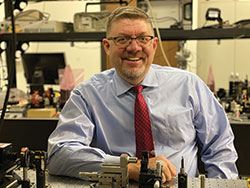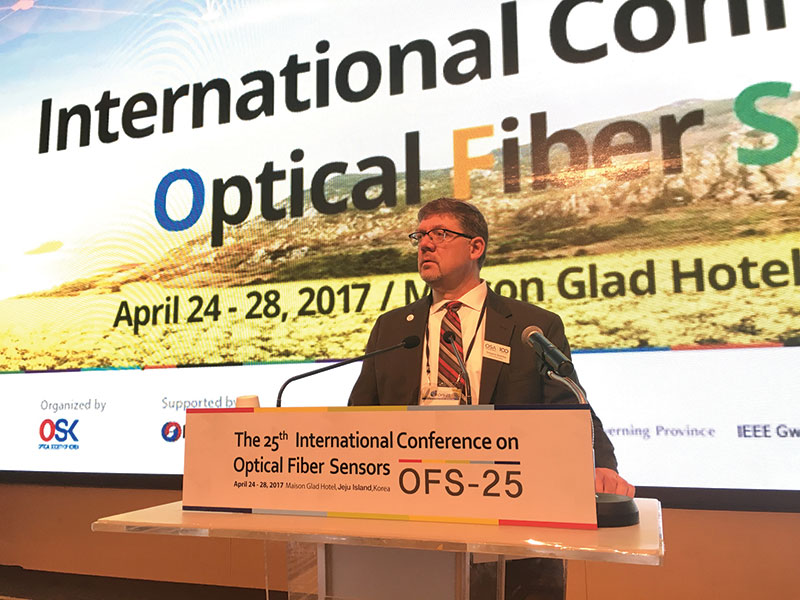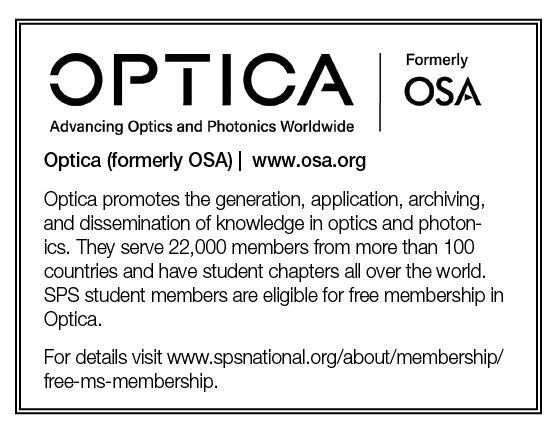Gregory Quarles on Careers, Industry, and Failing Fast
Fall
2021
Unifying Fields
Gregory Quarles on Careers, Industry, and Failing Fast
A PhD Physicist, Gregory Quarles has worked at federal labs and in academia, at small- and medium-sized businesses, at publicly traded companies, startups, and a nonprofit organization. Given his sector-crossing career, Radiations sat down (virtually) wit
 What is your current job?
What is your current job?
I am the CEO and president of Applied Energetics Inc. It’s a publicly traded company in Tucson, Arizona. We develop lasers and other technologies for the Department of Defense and for additive and subtractive manufacturing.
We’re a small company and we’re growing every day, so I wear many hats. I interface with our customers, meet with leaders at the Pentagon or at higher levels, and meet with other agencies to find out what they need and whether we can provide a solution. I reach out to companies that can supply the parts we need. I engage with the leading US universities doing optics, photonics, and laser-based research to form partnerships and look at the students coming through their pipeline. We’re constantly adding new hires.
What kinds of projects is Applied Energetics Inc. working on?
One of the things we’re working on is ultra-short-pulse lasers for the defense realm. We’re looking at next-generation threats that are very high flying or very fast. How do you deal with swarms of drones? How do you deal with hypersonic missiles that can fly between Mach 5 and Mach 20? Shooting a bullet at a bullet is tough, but could you do something at the speed of light to change its course?
Most of our developments and intellectual property are in frequency-agile sources that operate from the deep UV to the far infrared. In materials processing, manufacturers often use lasers to build materials layer by layer (additive manufacturing) or to remove parts of a material (subtractive manufacturing). Agile lasers are useful because many materials have preferential wavelengths. We can work in realms that some of the normal industrial lasers can’t work in as efficiently.
How did your education and career path lead you to where you are today?
When I was five years old, I tried to take apart an air conditioning system. I was a curious kid, always tinkering. I’m sure my parents heard “Why?” and “What?” from the backseat of the car more often than they wanted to.
I grew up in rural Oklahoma. We didn’t have AP classes or anything like that, but I was always challenging myself: Where’s the biggest challenge? What can I tackle today? One of my physics textbooks had a career section in the very back. It said that of all of the degrees, physics was the hardest path. That’s when I decided to study physics.
I started college wanting to study nuclear physics, but then I walked into a laser lab. I saw red, green, and blue light bouncing around. I saw crystals illuminated and all these different colors coming out. And I thought, “I can see this, I can touch this, I can understand this.” That was probably the first defining moment in my path.
After earning my bachelor’s, I received a fellowship from the American Physical Society to work at IBM for six months. It was another defining moment when I realized that industry could be the right path for me.
I finished my PhD during a low point in the hiring of physicists. Most of the jobs were in federal labs, and I accepted one at the Naval Research Lab. I had a phenomenal mentor who told me to publish, be first author on papers, and give invited presentations. This set me up to gain visibility and build my career early. I stayed there until I was lured away to cofound a startup.
Eventually we sold the startup to a publicly traded company, where I worked my way up to director of research and development. Another defining moment occurred there—we outgrew being a small business. We had supplemented our R&D budget with federal small business grants but couldn’t do that anymore. As a result, I was introduced to the world of Pentagon and congressional briefings, talking to congressional subcommittees, and securing funding for research that we could build into commercial and government applications.
I left that company to take my first executive position, as CEO with a defense company. Then I did another startup, sold it, and got a job with The Optical Society (OSA, now Optica) as their Chief Scientific Officer. While there, I spent almost five years trying to understand the different needs of the global optics and photonics community, from sub-Saharan Africa to eastern Asia, from Eastern Europe to the US. That shed light on the need for global solutions and for building a diverse science community, empowering that diversity, and helping others advance their careers through mentorships.
The job with Applied Energetics Inc. came up in 2019. The company had once been thriving but was in a hiatus status. They wanted somebody to kick-start things again, and we’ve done that. We assembled a really sound board of directors with different backgrounds than mine, we’ve built up our IP portfolio, and we’ve found a way to keep everybody safe and employed while being very responsive to our customer base during COVID-19.
An academic researcher might work on the same project for their entire career, but you work on deliverables. What’s that like?
We look at what’s best for the company and our customer. We may be working on four different sets of deliverables at once, so we have to consider which one has the highest urgency, sufficient funding, and the greatest opportunity to be commercialized. As a publicly traded company, our job is to look at technology that we can roll out to generate cash flow and revenue.
You have to learn to let go. If you see that there’s no way to meet financial objectives, technical objectives, or customer expectations, you have to kill programs early. I think that’s where the industry mindset and the academic mindset sometimes clash. In industry you fail fast and fail often. If you throw 10 things against the wall and one sticks, you’re doing pretty good.
You regularly bring in students to work with you. Why?
I don’t think students are presented with a complete picture of what their careers could look like. When you talk to early career professionals, they don’t see the nonacademic paths, and that’s where 90% of the jobs are located.
I want to expose as many students as I can to industrial research and how it can be just as fulfilling as academic research. When I got the APS fellowship to work for IBM, I had two years of lab experience and one publication from undergrad; IBM handed me the keys to a lab and said, “We need you to do this. Let us know what kind of budget and resources you need.”
I had the freedom to learn how to fail fast—come up with a concept, see if it works, throw it to the side if it doesn’t work, take the data, and move on to something else. Those are skills you really only get in a setting where you’re merging science and engineering.
What do you look for in those students?
Creativity. Being able to think outside of the box when looking for solutions. The ability to explain to a member of Congress what we’re doing and why. Every once in a while we need a specialist, but I also want people with a breadth of skills and diverse backgrounds. When it comes to laser engineers, I’m looking for software skills, coding skills, and maybe some materials science or opto-mechanical engineering. I don’t want to hire a specialist to fill every one of those gaps.
What would you like academic physicists to know about industry?
There are some tremendous opportunities to work with industry. We have contracts with academic advisors who help us determine whether our concepts can be realized, their limitations, and what areas need research funding. And then we approach agencies and say, “We have this teaming relationship, and we’re looking to prove this concept so that it can be used to solve your problem. We’d like you to fund us jointly to work on this.” It’s not just about fundamental physics, it’s also about scaling—how we go from “Yes, it’s possible” to “Yes, it’s possible and here’s a design.”
If you’re interested in industry opportunities, look at the professional conferences building the foundation of your field, the best ones in the world. Go to where people are trying to move from fundamental research to applications and insert yourself. Networking is key—listening to a talk and going up to the presenter afterwards and saying, “Have you thought about this? Maybe we can work together on trying to find your solution.” A lot of industry is open to this approach because it accelerates what they’re doing.
What thoughts would you like to leave with Radiations readers?
Always ask why. Always look for ways to solve problems and look for collaborations. We tend to try to solve problems by ourselves or with a close group, but bringing in outside voices can help drive your decision-making. Build a team around you that isn’t trained just like you.

Share Your Career Story
Do you have an interesting career, career story, or career path you’d like to share with Radiations readers? Send us an email at sps [at] aip.org or submit a “hidden physicist” form at tinyurl.com/hiddenphysicist. We’d love to hear from you!

